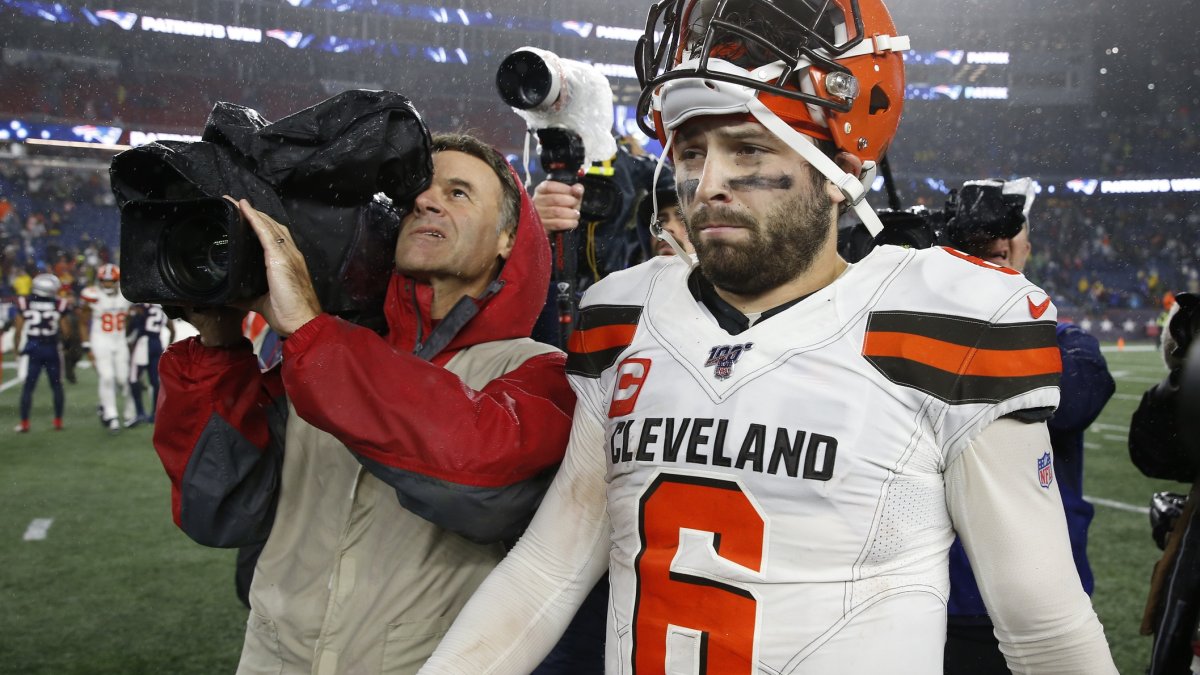Whether it’s a humiliating loss on national television, puzzling coaching decisions, or even a verbal dustup between their prickly quarterback and a local media provocateur, it’s safe to say things have not gone according to plan for the Cleveland Browns in 2019.
Baker Mayfield was often listed as a top-10 quarterback this summer after lighting the NFL on fire the second half of his rookie season. In Weeks 10-17, Mayfield elevated his game to an elite level, recording the fifth-highest passing grade across the league, behind only Drew Brees, Andrew Luck and Patrick Mahomes.
Not only was Mayfield passing the eye test, but stats nerds were also doing double takes on their spreadsheets with amazement. Mayfield was the third most efficient quarterback over the same stretch, as measured by expected points added (EPA) per dropback, trailing only last year’s MVP and leading 2019 candidate Russell Wilson.
Mayfield, to be kind, hasn’t lived up to the promise he showed in the second half of his rookie season. The Browns rank third-to-last in EPA per dropback this year, with Mayfield’s struggles driving their 2-5 record. The Browns can only be considered a major disappointment after betting odds projected them to win more than nine games and anointed the team as the frontrunner to capture their division.
Most NFL fans and media tend to focus primarily on recent results, so it’s no surprise that fan sentiment sees Mayfield as inferior to fellow first-round quarterback Lamar Jackson and quarterback rankers not only have dropped Mayfield out of the top 10 but often see him as a bottom-half NFL signal-caller. At PFF, we’re more sanguine about Baker Mayfield’s future. Our recently released quarterback rankings place Mayfield at 14th, a fall from our preseason ranking of 10th, but not the precipitous drop others would assume.
What buoys our opinion of Mayfield with his stats sinking like a rock? First, we’re including 2018 data in our conclusions, which would seem logical as the more substantial 16 games from last season should provide additional signal to his eight this year. Second, we base our assessments on PFF's passing grades, which have generally been favorable to Mayfield in comparison to production-based statistics like EPA. Our grades don’t view Mayfield’s propensity to turn the ball over as harshly because we give more weight his turnover-worthy plays (17th highest in the NFL) than the randomness that determines how many end up becoming interceptions (second highest). Over a long enough timeline, you’d expect grades and stats to roughly align, as the noise from fortuitous bounces, dropped passes and varying supporting casts become smaller with increasing sample sizes.
But no measure, even PFF grades, should be viewed as a perfect encapsulation of truth. With access to PFF grades and production-based stats like EPA, we can test and formulate how to combine the two into a measure that forecasts better than either on its own.
In this article, we’ll walk through the extending process of Bayesian updating previously applied to passing grades for quarterbacks and offensive tackles to the pure production-based statistic of EPA per dropback. Long story short, you can think of Bayesian updating as a statistically sound method of incorporating our pre-NFL expectations with actual NFL performance into a new range of expectations going forward. Then, we’ll test our best guess Bayesian predictions for both grades and EPA on historical data and figure out how to best combine them for the most accurate predictions and best answer to where Baker Mayfield sits among the 2018 quarterback class and his current potential to reach elite status.
Exclusive content for premium subscribers

WANT TO KEEP READING?
Dominate Fantasy Football & Betting with AI-Powered Data & Tools Trusted By All 32 Teams
Already have a subscription? Log in



 © 2025 PFF - all rights reserved.
© 2025 PFF - all rights reserved.